Related Research Articles

The Junkers Ju 86 was a German monoplane bomber and civilian airliner designed in the early 1930s, and employed by various air forces on both sides during World War II. The civilian model Ju 86B could carry ten passengers. Two were delivered to Swissair and five to Deutsche Luft Hansa. In addition a single civilian Ju 86Z was delivered to Sweden's AB Aerotransport.

The Boeing XF6B-1 / XBFB-1 was Boeing's last biplane design for the United States Navy. Only the one prototype, Model 236, was ever built; although first flying in early 1933, it rammed into a crash barrier in 1936 and the design was not pursued further.

The Avia BH-1 was a two-seat sports plane built in Czechoslovakia in 1920. It was the first product of the Avia company, and it was originally designated BH-1 exp. The BH-1 was a low-wing braced monoplane of wooden construction, with tailskid undercarriage. Power was provided by a Daimler engine, which proved inadequate to fly the aircraft with both seats occupied.
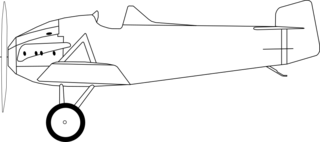
The Avia BH-4 was a prototype fighter aircraft built in Czechoslovakia in 1922. It was a development of the BH-3 fitted with a Hispano-Suiza 8 engine in an attempt to improve the aircraft's performance. To accommodate the new powerplant, the forward fuselage was considerably redesigned, and the structure in general and undercarriage in particular were strengthened. Performance was found to be only marginally better than the BH-3, and development was quickly abandoned.
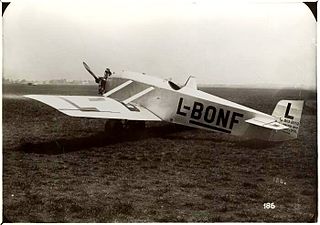
The Avia BH-9 was a twin-seat sports plane built in Czechoslovakia in 1923, based on the BH-5. As with other developments in the BH-1 lineage, the BH-9 was a low-wing braced monoplane that accommodated the pilot and passenger in tandem, open cockpits. The BH-9's structure was strengthened to allow the use of a higher-power engine than in its predecessors, and for the first time, this was a domestically-produced powerplant. Although built as a twin-seat aircraft at least one was converted to a single-seater.

The Avia BH-11 was a two-seat monoplane sport aircraft designed and produced by the Czechoslovakian aircraft manufacturer Avia.

The Avia BH-22 was a trainer aircraft built in Czechoslovakia in 1925, based on the BH-21 fighter. A smaller engine was used and armament removed. The lighter engine required the wing stagger to be decreased. No significant modifications were made to the airframe structure, reduced weight further increasing the ultimate load factor. Some aeroplanes carried a camera gun. The type saw long service as a special aerobatic trainer and eventually several examples found their way into Czechoslovakia's aero clubs.

The Avia BH-33 was a biplane fighter aircraft built in Czechoslovakia in 1927. It was based on the BH-21J which demonstrated promising results by combining the original BH-21 airframe with a licence-built Bristol Jupiter radial engine. Other than the peculiar Avia hallmark of having an upper wing with a shorter span than the lower, it was utterly conventional, even featuring a tail fin for the first time in a Pavel Beneš and Miroslav Hajn design.
The Avro 558 was a British single-engined ultralight biplane built by Avro at Hamble Aerodrome.
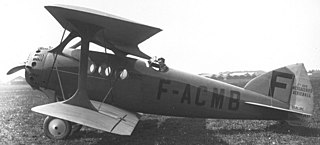
The Bleriot-SPAD S.33 was a small French airliner developed soon after World War I. The aircraft was a biplane of conventional configuration whose design owed much to the Blériot company's contemporary fighter designs such as the S.20. Four passengers could be accommodated in an enclosed cabin within the monocoque fuselage, and a fifth passenger could ride in the open cockpit beside the pilot. A great success, the S.33 dominated its field throughout the 1920s, initially on CMA's Paris-London route, and later on continental routes serviced by Franco-Roumaine.

The Blériot-SPAD S.46 was a small French airliner of the 1920s, developed from the Blériot-SPAD S.33. Like its predecessor, it was a conventional biplane that seated four passengers in an enclosed cabin while the pilot and occasionally a fifth passenger rode in an open cockpit. The S.46 had a redesigned wing of longer span and a far more powerful engine. The type was employed by Franco-Roumaine, which purchased 38 out of the 40 examples produced for use on their continental European routes.

The Fokker D.IV was a German fighter biplane of World War I, a development of the D.I.
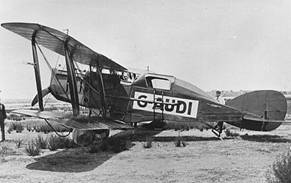
The Bristol Tourer was a British civil utility biplane produced in the years following the First World War, using as much as possible from the design of the Bristol Fighter aircraft. Bristol Tourers were delivered with a variety of engines, subject to availability and customer desires; these included the Rolls-Royce Falcon, Siddeley Puma, Hispano-Suiza 8, and Wolseley Viper. Many Tourers were fitted with a canopy to cover the one or two passenger seats in the rear cockpit, giving the type its original name of Coupé. The pilot's cockpit, however, remained open.

The Caudron C.440 Goéland ("seagull") was a six-seat twin-engine utility aircraft developed in France in the mid-1930s.

The Farman F.160 was a heavy bomber aircraft developed in France in the late 1920s. It was essentially an attempt by Farman Aviation Works to modernise its tremendously successful F.60 Goliath design of the immediately postwar years. The most noticeable external difference was the larger tailfin of the new aircraft. Like its predecessor, it was a large three-bay biplane of conventional configuration with unstaggered wings of equal span. Initially conceived as a heavy night bomber, most examples built were float-equipped torpedo bombers for the Aéronautique Maritime, which operated some 40 of the F.165 variant and 200 of the F.168. One of the original F.160 night bombers was exported to Italy, and one to Japan. Plans to develop airliner versions did not progress past the prototype stage.

The HAL HAOP-27 Krishak ('Farmer') was a military observation aircraft produced in India in the 1960s. It was initially developed by Hindustan Aeronautics as an enlarged, four-seat version of the HAL Pushpak light aircraft.

The Hanriot H.41 was a military trainer aircraft produced in France in the 1920s. It was a further development in the family of aircraft that had commenced with the HD.14 in 1920, and incorporated a number of design features that had been developed for other members of that family. Like those other aircraft, however, it was a conventional, two-bay biplane with unstaggered wings of equal span.
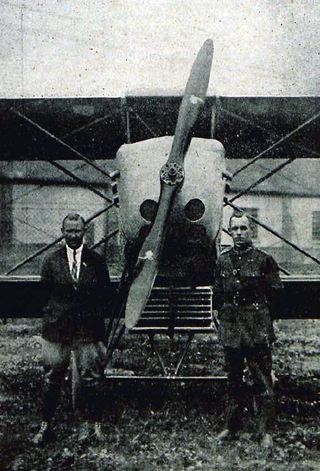
The Hanriot HD.19 was a military trainer aircraft produced in France in the 1920s.

The Hanriot HD.32 was a military trainer aircraft built in France in the 1920s. Derived from the HD.14 and sharing the same basic configuration as it, the HD.32 was a substantially revised design, with redesigned tailplane, undercarriage, and wings of shorter span. The HD.14's wooden construction was replaced in part with metal structure.

The Maule M-7 is a family of single-engine light aircraft that has been manufactured in the United States since the mid-1980s.
References
- Taylor, Michael J. H. (1989). Jane's Encyclopedia of Aviation. London: Studio Editions. p. 86.
- World Aircraft Information Files. London: Bright Star Publishing. pp. File 889 Sheet 86.
- Němeček, V. (1968). Československá letadla. Praha: Naše Vojsko.